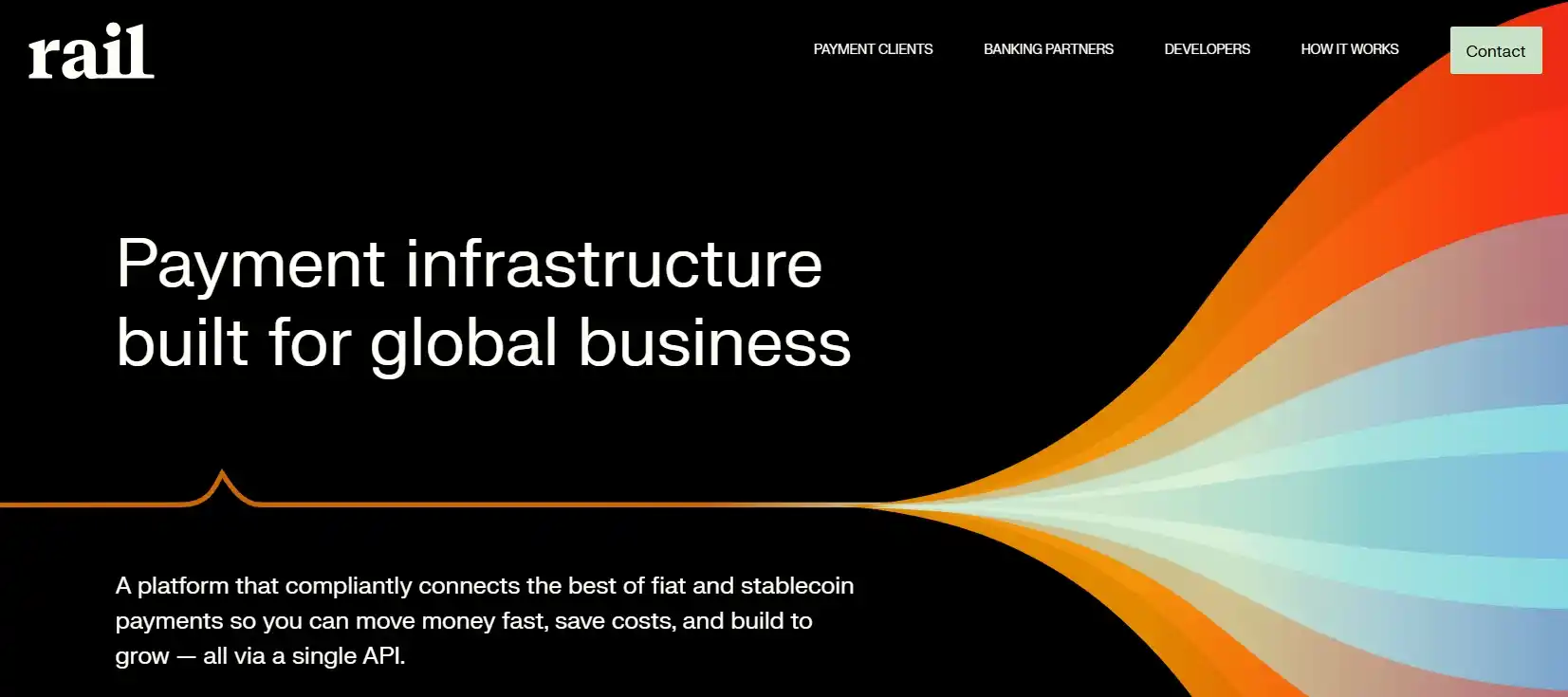Modern blockchain technologies face challenges of scalability, high transaction costs, and limited throughput. Rail offers an innovative solution based on modular architecture that enables developers to create efficient decentralized applications (dApps). The platform combines the advantages of various approaches, including optimized smart contract execution and a flexible inter-blockchain communication system.
Contents:
- What is Rail?
- Architecture and Key Platform Components
- Rail's Advantages Over Traditional Blockchains
- Use Cases and Applications
- Project Future and Ecosystem Development
- Conclusion
What is Rail?
Rail is a decentralized platform designed to address the main limitations of modern blockchain networks. Unlike monolithic solutions, the project offers a modular approach where each component performs specialized functions. This enables high performance without compromising security.
The primary goal of Rail is to provide developers with tools for creating scalable dApps with low transaction costs. The platform supports cross-chain interoperability, making it attractive for projects operating in multi-chain environments.
A key feature is its proprietary consensus mechanism optimized for fast transaction processing. This enables high-speed transaction confirmation, which is critical for financial applications and gaming platforms.
Architecture and Key Platform Components
Rail is built on innovative modular architecture that fundamentally differs from traditional monolithic blockchain solutions. This approach separates functional layers of the platform, ensuring optimal performance and scalability. Each module handles specific tasks, collectively creating a flexible and efficient ecosystem.
Key system components are organized into three main layers:
| Layer | Purpose | Technical Features |
|---|---|---|
| Execution Layer | Smart contract processing and transaction execution | EVM compatibility, low latency |
| Settlement Layer | Final transaction confirmation and security | Optimized consensus mechanism |
| Data Layer | Information storage and availability guarantee | Decentralized data distribution |
In addition to these core layers, the platform includes additional elements such as the Railway interchain protocol and Rail SDK developer tools. These components enable easy integration with other blockchains and accelerate decentralized application development.
Clear functional separation prevents system overload and maintains high throughput. This architecture makes Rail a universal solution for various Web3 use cases.
Rail's Advantages Over Traditional Blockchains
Rail's main differentiator from classical solutions is high throughput while maintaining decentralization. While Bitcoin and Ethereum struggle with slow transactions and high fees, Rail enables fast operations with minimal costs.
Another significant advantage is EVM (Ethereum Virtual Machine) compatibility, allowing easy migration of existing dApps. This lowers the entry barrier for developers and accelerates ecosystem growth.
Moreover, the modular structure allows network adaptation for various needs, whether NFT, DeFi, or enterprise solutions.
Use Cases and Applications
Rail provides universal infrastructure for various Web3 sectors, combining high performance with low costs. The platform is particularly valuable for projects requiring fast transaction processing and economic efficiency.
Key application areas:
- DeFi protocols: exchanges, lending platforms, and staking services
- GameFi projects: NFT games and virtual worlds with instant payments
- NFT marketplaces: platforms for trading digital collectibles
- DAOs: decentralized community governance systems
- Enterprise solutions: logistics, document flow, and supply chains
Broad EVM compatibility and advanced development tools make Rail attractive for both startups and large enterprises. The platform continues expanding its applications, offering innovative solutions for the digital economy.
Project Future and Ecosystem Development
Rail's future involves continuous platform enhancement and stronger positioning in the Web3 space. Developers focus on improving cross-chain interoperability for seamless integration with other blockchain ecosystems. Special attention is given to smart contract optimization and lowering the entry barrier for new participants.
The Rail ecosystem grows through strategic partnerships with leading DeFi and DAO projects, fostering organic user base growth. Implementing decentralized governance mechanisms gives the community direct influence over platform development. Long-term, Rail aims to become foundational infrastructure for large-scale Web3 solutions, combining high performance with decentralized technology democratization.
Conclusion
Rail presents a promising solution for overcoming current blockchain technology limitations. Modular architecture, high performance, and EVM compatibility make the platform attractive for both developers and users.
As the Web3 ecosystem grows, demand for scalable and cost-effective solutions will only increase. With its flexibility and innovative approach, Rail is well-positioned to become a major player among leading blockchain projects. The platform already offers tools for creating efficient dApps, and may become the foundation for new generations of decentralized applications.







